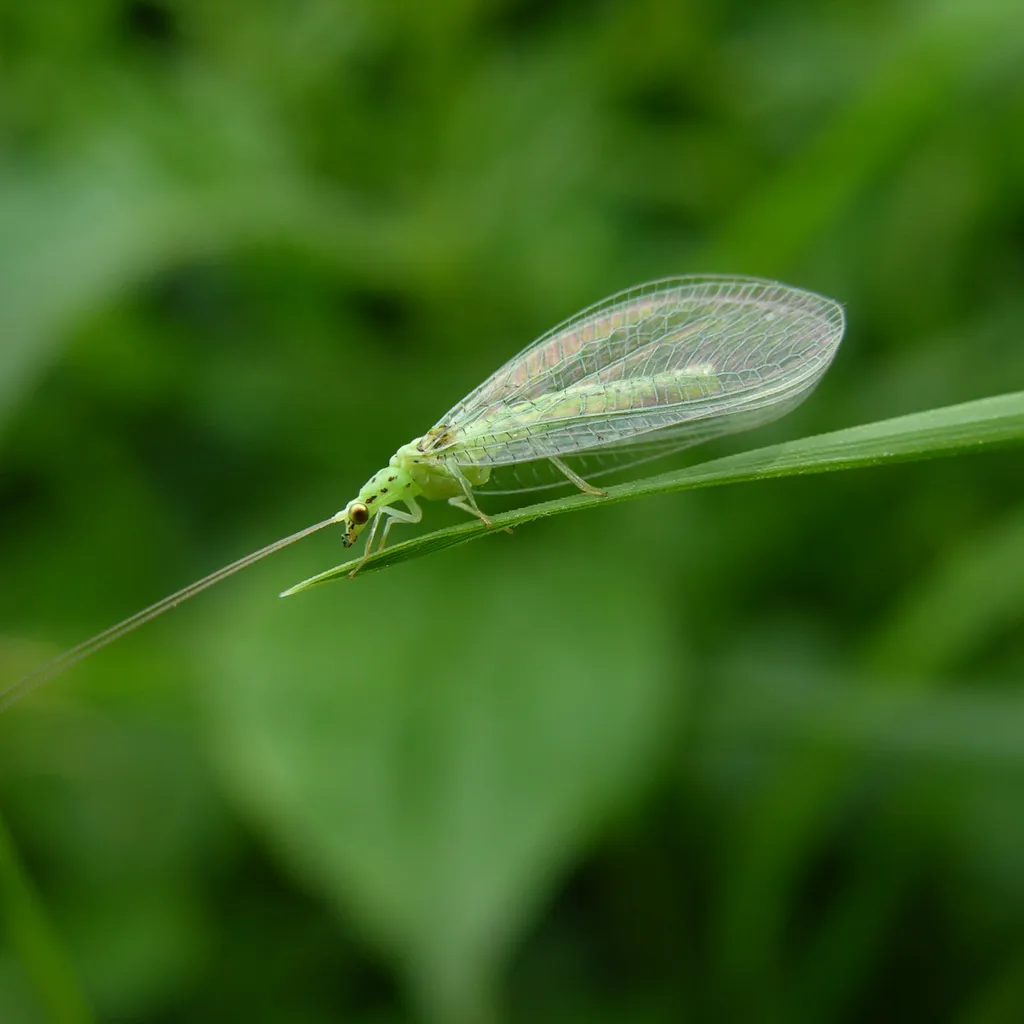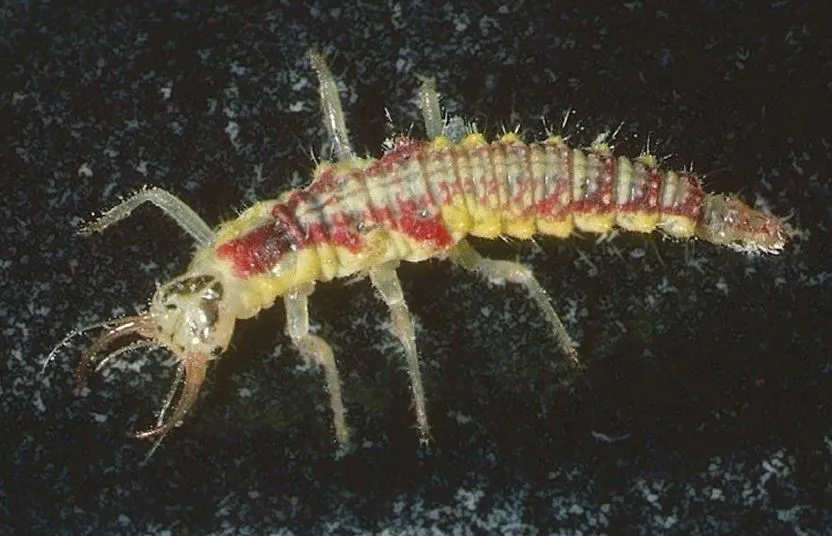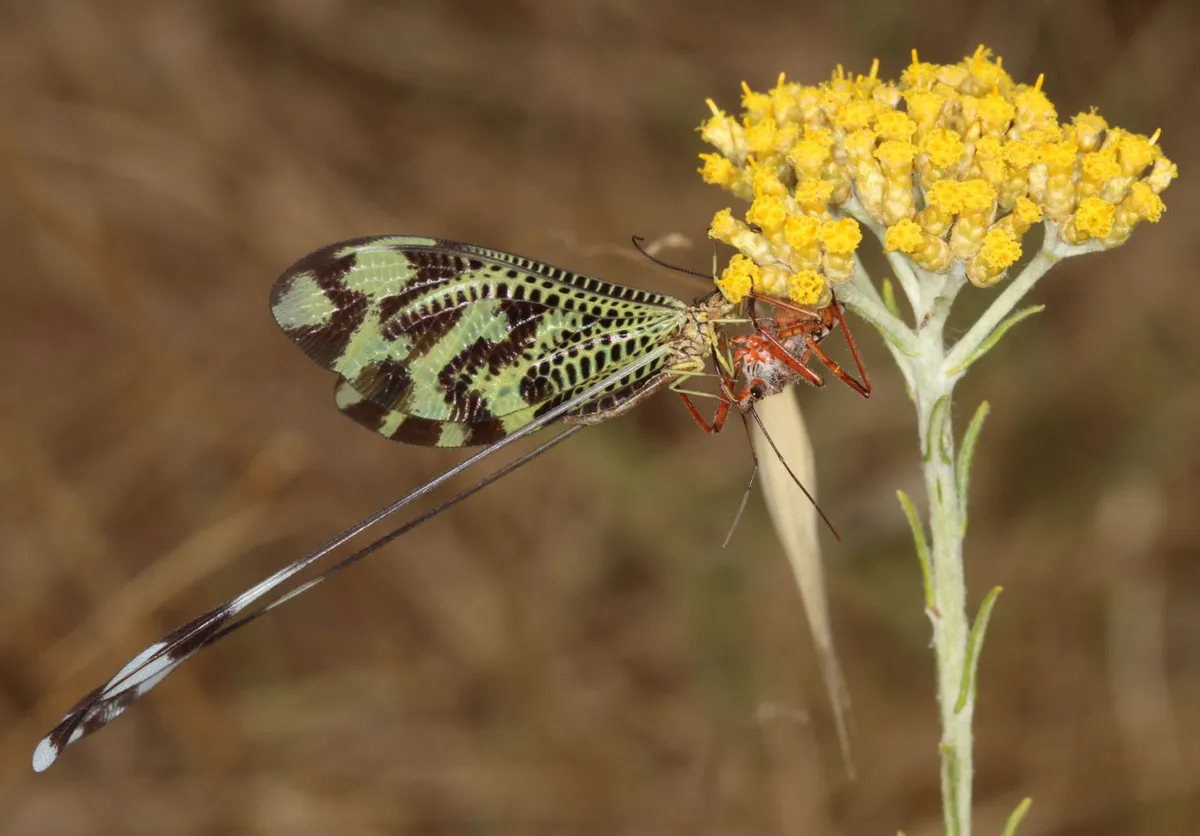Pick a name…Lacewing or Stinkfly? Paradoxically, both of these contradictory common names are associated with these beautiful, beneficial insects. They have a captivating appearance with their slender bodies, translucent lace-like wings and metallic, golden eyes. But don’t let their fragile appearance deceive you; they are formidable predators, with voracious appetites and they play a vital role in the eco-systems of our gardens. Fran Sconce, entomologist and Royal Entomological Society's Outreach Officer, tells us more about them and why they are one of our garden’s most graceful and valuable inhabitants.
You may also like
- Moths are overlooked but play an important role in our gardens
- Earwigs are perfect pest control
- Aphids are one of the most remarkable insects on the planet
- Dragonflies and damselflies once had huge wingspans
- Wasps are annoying but you definitely want them in your garden
- Ants may be small, but we should respect them
- Earwigs are great garden helpers
Lacewings belong to the order Neuroptera, a delightful group of insects known for their intricate wing veins with a delicate, lacy appearance. Among the most frequently encountered lacewings in Britain are those from the green lacewing family, Chrysopidae, and also the brown lacewing family, Hemerobiidae. Their translucent wings help to camouflage them amongst plant foliage in diverse habitats: gardens, meadows, woodlands or wetlands. They are commonly found in temperate climates across Europe and North America, but they are also found in some tropical locations. Worldwide there are around 6,000 known species in 17 families; in Britain there are 70 species in six families. Lacewings are also referred to as ‘Stinkflies’ due to their ability to release an unpleasant odour as a defensive mechanism against predators.

Lacewings are nocturnal or crepuscular (coming out at dawn or dusk) making them primarily active during the darker hours. They find mates by using two sound receptive organs, one at the base of their wings and the other in their legs. These ‘tympanal’ organs enable them to hear the sounds emitted by prospective mates as they ‘tremulate’ or vibrate their bodies during courtship by emitting low-frequency sounds. These sounds, beyond the human auditory range, become a duet or song between the mating couples, and are specific to their species; courtship does not take place without it.

Females will lay several hundred eggs, usually on the underside of leaves and close to a food source of aphids. Each egg is hung from a fine extended thread, often in delicate clusters, to help deter would be predators, or their own cannibalistic larvae, from devouring them. The larvae themselves emerge a few days later, immediately moult and hunt for food sources.
The hunting prowess of the larvae has led to them being nick-named as ‘Aphid Lions’
The larvae are formidable creatures with insatiable appetites. Their well-developed mouth parts or mandibles enable them to immediately prey on aphids, caterpillars and other soft bodied insects. In order to enhance their hunting efficiency and safeguard against predators, the larvae frequently camouflage themselves in the remains, or exoskeletons, of their prey. Their hunting prowess and voracious efficiency has led to them being affectionately nick-named as ‘Aphid Lions’, but don’t get too close…they are also capable of giving humans a little nip too! During these 1-3 weeks of feeding the larvae will undergo ‘instar’ or growth stages after which pupation will occur within a specially woven cocoon, before they finally emerge as an adult.

The Lacewing’s ability to consume aphids at such an astonishing pace, make them a fantastic asset for any garden. They serve a vital purpose in maintaining insect pest populations and are actively encouraged in commercial agriculture and horticulture. In fact, they are intentionally introduced into greenhouses because of their effectiveness as an organic, biological control. In our own gardens they play an important role in keeping aphid infestations at bay through eco-friendly means and therefore minimise the need for harmful chemical pest control methods and pesticides.
How to encourage lacewings in the garden?
There are few, if any, downsides to having lacewings in our gardens. In fact, their presence is highly desirable and should be positively encouraged. They can inadvertently aid plant pollination by transferring pollen while foraging for nectar or prey amongst flowers, and they are a welcome part of a naturally balanced, bio-diverse garden eco system.

Gardeners can create lacewing-friendly habitats in the garden that support the insects at each stage of their development. Adults will benefit from leaving flowering weeds and the planting of nectar-rich plants for them to feed on; this will also attract other beneficial insects. Consider providing safe havens for over-wintering pupae by leaving certain areas in your garden undisturbed. Log piles, dense hedges and other sheltered spots are ideal, or you can build small insect structures with corrugated cardboard or bamboo canes. During the autumn, avoid excessive cutting back of perennials so that lacewings can find suitable places to shelter.
As ever it is important to refrain from the use of chemical controls in the garden. The lacewings themselves are an excellent natural pest control and small populations of aphids can be tolerated to aid their populations. Please also consider the use of lights in the garden which can adversely affect insects and animals. Lacewings, being nocturnal, are particularly sensitive to light pollution and may choose darker gardens as a result.

Lacewings are important for maintaining a healthy balance in our gardens and, by understanding their life cycle and habitats, gardeners can attract and support these fascinating insects. Embracing lacewings as predators and pollinators is a step towards a more environmentally friendly approach to gardening. These delicate creatures are indeed the garden’s most graceful of guardians.
Did you know the Royal Entomological Society offers an insect identification service? If you would like to know more about an insect you have discovered in your garden, you can fill out the form on the RES website here and one of the RES team will contact you with more information.
FACT FILE
• Lacewing larvae kill their aphid prey by injecting them with digesting enzymes which liquify the insides of an aphid within seconds. The larvae then suck out the dissolved juices to eat it.
• Lacewings can hear bats’ ultrasonic sounds in their hearing organs and entomologists have observed them making evasive movements in proximity to these noises.
• Australian Scientists have discovered that the silk lacewings use to make their rigid egg stalks, is much tougher and can be stretched six times further than the commonly used silkworm silk. Due to its unusual structure, it is likely to be easier to manufacture artificially and scientists are experimenting with ways to make this a possibility.
Follow #GISmallStories on social media to join the conversation.
Here's more on why invertebrates are important in our gardens





